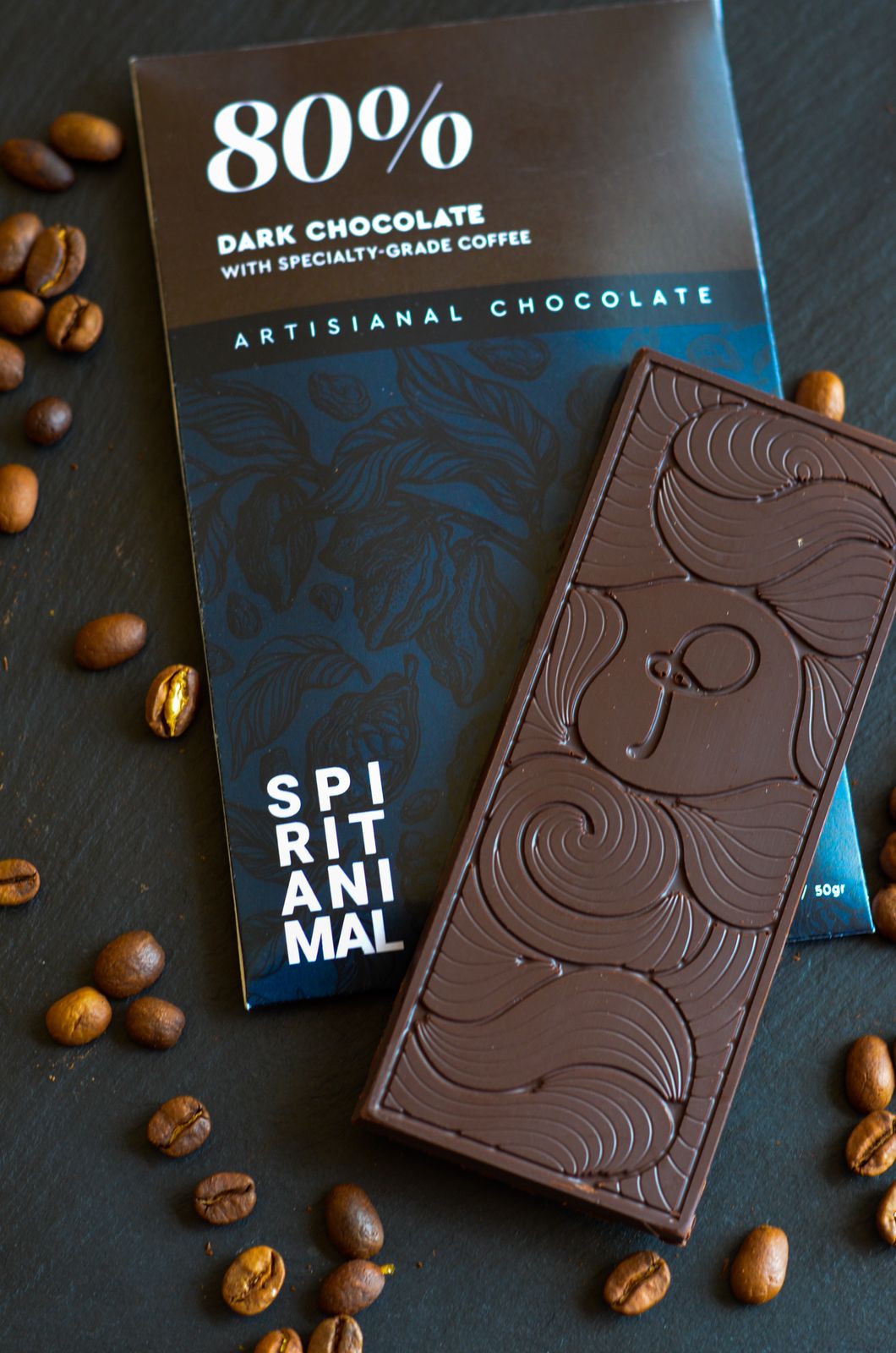Coffee Beans Uncovered: Uncovering the Tricks of Espresso and Blended Coffee Beans
When you assume about coffee, what comes to mind? Is it the rich scent of espresso or the intricacy of a well-crafted mix? Understanding the subtleties of coffee beans can transform your experience. Each variety, from Arabica to Robusta, holds its very own secrets. As you discover even more, you'll uncover just how these beans shape tastes and effect sustainability. What might you find concerning your next mug?
The Origins of Espresso: A Historic Perspective
Although coffee is currently a staple in coffee society worldwide, its beginnings trace back to the early 20th century in Italy. In 1901, Luigi Bezzera patented the initial espresso maker, intending to brew coffee faster than conventional approaches.
Recognizing Coffee Beans: Attributes and selections
When you believe concerning coffee, it's necessary to recognize the different bean varieties and their one-of-a-kind tastes. Each type brings a distinctive personality to your mug, affected by aspects like roast degrees. Recognizing these components can boost your espresso experience substantially.
Coffee Bean Varieties
As you explore the world of espresso, you'll quickly find that not all beans are created equivalent; each range brings its own special flavors and characteristics to your cup. The most popular kinds include Arabica and Robusta. Arabica beans are recognized for their smooth, nuanced tastes and lower caffeine content, making them a favorite amongst coffee lovers. On the various other hand, Robusta beans pack a stronger strike with greater caffeine and a much more bitter taste, often favored in blends for their crema-enhancing high qualities. You may additionally come across specialized beans like Liberica and Excelsa, which offer distinctive profiles and are less common. Each selection offers something different, so trying out will certainly assist you discover your excellent coffee.
Taste Profiles Discussed
Recognizing the taste accounts of various espresso beans can raise your coffee experience. Each bean range provides distinct qualities that affect taste, mouthfeel, and aroma. For instance, Arabica beans often offer a sweeter, much more complicated taste with tips of fruit and floral notes, while Robusta beans have a tendency to be bolder, with nutty and earthy touches.
When you check out single-origin beans, you might find unique local flavors-- Main American beans might be citrusy and brilliant, whereas Italian blends often provide rich, chocolatey notes.
Roast Levels Effect
Roast levels play an important function in forming the taste and aroma of coffee beans, affecting your total coffee experience. Comprehending these roast degrees aids you pick the espresso that suits your taste choices. Exploring with various roasts can lead to delightful discoveries, boosting your appreciation for espresso.
The Art of Blending: What Makes Blended Coffee Special
What makes mixed coffee so interesting? It's all about the art of incorporating beans from different beginnings, roast degrees, and flavor profiles. When you blend, you're not simply mixing; you're producing a harmonious equilibrium that highlights the strengths of each bean. You can explore various mixes to improve sweetness, body, and acidity, resulting in a mixture that's richer and more complex than a single-origin coffee.
Blending also permits you to accommodate varied preference preferences. You can craft a blend that's mellow and smooth or one that's bold and durable, relying on your target market. And also, mixing can aid preserve consistency, offering a reputable taste experience regardless of seasonal variants in beans. So, whether you're a home or a barista brewer, mastering the art of blending opens a world of imagination and taste possibilities, making your coffee experience genuinely unique - SOE.
Taste Accounts: Tasting Notes of Coffee vs. Blended Coffee
Combined coffee supplies a globe of taste possibilities, yet when it involves espresso, you're taking a look at a more focused experience. Espresso normally showcases bold, abundant flavors with a thicker mouthfeel. You may discover notes of dark chocolate, caramel, or perhaps tips of fruit, depending upon the beans. The intensity can be both invigorating and pleasing.
On the other hand, mixed coffee provides a complicated tapestry of flavors. You can check out a variety of sampling notes, from nutty and wonderful to flower and fruity. Each blend can provide something one-of-a-kind, typically integrating beans from various regions to create a well balanced profile.
While espresso delivers a punch, mixed coffee welcomes you to relish the nuances. Whether you prefer the durable strength of coffee or the intricate tastes of blended coffee, each cup informs its very own tale, awaiting you to uncover.
Brewing Techniques: Refining Your Espresso Shot
To achieve the ideal coffee shot, comprehending the developing techniques is necessary, as also minor changes can substantially affect the taste and high quality. Begin by using fresh, top notch coffee beans; grind them simply prior to brewing for optimum taste. Go for a fine work, regarding the consistency of salt, to ensure perfect removal.
Following, pay interest to your water temperature; it ought to be between 195 ° F to 205 ° F. Too warm or too chilly can spoil your shot. Usage regarding 18-20 grams of coffee for a double shot, and tamp it evenly with firm stress to produce a consistent puck.
A longer extraction can lead to bitterness, while too short can result in sour flavors. Practice these strategies constantly, and you'll fine-tune your abilities, attaining that rich, full-bodied espresso shot you crave.
The Role of Roast Levels in Espresso and Blended Coffee
After mastering the developing strategies for espresso, it's time to consider exactly how roast levels affect the taste account of your coffee. The roast degree can drastically modify your espresso's fragrance, preference, and body. Light roasts often tend to highlight the coffee's beginning, offering bright acidity and fruity notes, while medium roasts balance acidity and sweetness, creating an all-round taste. Dark roasts, on the other hand, bring out strong, abundant tastes with lower level of acidity, frequently producing delicious chocolate or great smoky undertones.

Checking Out Sustainability: Moral Sourcing of Coffee Beans
When you pick coffee, you're not simply choosing a taste; you're making a choice concerning the influence on farmers and the atmosphere. Comprehending Fair Profession practices, natural farming techniques, and certification standards can aid you support sustainable coffee sourcing. Let's check out just how these variables add to an extra honest coffee experience.
Fair Profession Practices
Fair Profession practices play a crucial role in making sure that coffee beans are sourced ethically and sustainably. When you pick Fair Profession coffee, you support farmers that obtain fair salaries and work in risk-free problems. By deciding for Fair Trade brands, you're not simply delighting in a rich cup of coffee; you're making a favorable effect on the lives of those that grow it.
Organic Farming Methods
As you check out the world of ethical coffee sourcing, natural farming approaches become an essential component of go to website sustainability. By choosing organic coffee, you sustain practices that focus on dirt wellness, biodiversity, and all-natural environments. Farmers prevent synthetic pesticides and fertilizers, counting rather on natural compost and plant rotation to enhance soil fertility. This not just shields the setting yet additionally boosts the high quality of the coffee you delight in. Natural farming urges regional wildlife and promotes a well balanced community, reducing the opportunities of illness and insects. In addition, it often brings about more powerful, healthier coffee plants, causing richer tastes in your mug. You're making a mindful selection that profits both the planet and your taste buds. when you opt for organic coffee.
Accreditation Standards Explained
Comprehending qualification standards is crucial for anyone thinking about fairly sourced coffee. These criteria, such as Fair Trade, Rain Forest Alliance, and USDA Organic, guarantee that coffee is grown under lasting techniques. When you pick licensed coffee, you support farmers that comply with honest labor methods and environmental management.
Fair Profession accreditation focuses on giving reasonable earnings and functioning problems, while Rainforest Partnership emphasizes biodiversity and community preservation. USDA Organic ensures that no synthetic plant foods or chemicals are utilized. By acquainting yourself with these accreditations, you can make educated choices that line up with your values. Following time you go to your regional café or grocery shop, search for these tags, and really feel excellent knowing your coffee acquisition positively impacts neighborhoods and the atmosphere.
Frequently Asked Concerns


Just How Does Elevation Impact the Development of Coffee Beans?
Elevation influences coffee bean growth by affecting temperature and environment. Greater altitudes frequently create denser beans with more complicated flavors, while reduced altitudes can cause faster growth but much less tasty outcomes. You'll taste the distinction!
What's the Difference In Between Arabica and Robusta Beans?
Arabica beans are sweeter and a lot more complex, while Robusta beans have a more powerful, harsher flavor with greater caffeine content. You'll locate Arabica liked for specialty coffees, whereas Robusta's often made use of in immediate coffee and espresso blends.
Can Coffee Beans Spoil or Lose Taste Over Time?
Yes, coffee beans can go negative and lose taste in time. They'll come to be stale if you keep them poorly or keep them try this site also long. Always maintain your beans in an airtight container far from light and dampness.
What Are the Health Benefits of Drinking Coffee?
Drinking espresso increases your power, enhances psychological clearness, Recommended Reading and might reduce the threat of certain illness. It's abundant in antioxidants, supports metabolic rate, and can improve state of mind, making it a beneficial option for your day-to-day regimen.
How Does Water High Quality Influence Coffee Removal?
Water high quality substantially impacts coffee removal. It affects the solubility of oils and flavors, affecting preference and aroma. Using filtered water can enhance your espresso, guaranteeing a pleasurable and balanced cup every single time you make.
Coffee Beans Uncovered: Uncovering the Secrets of Espresso and Blended Coffee Beans.
Understanding the flavor profiles of different espresso beans can elevate your coffee experience.Roast degrees play an essential role in shaping the flavor and aroma of espresso beans, affecting your overall coffee experience (SOE).Blended coffee offers a world of taste opportunities, however when it comes to coffee, you're looking at a much more concentrated experience.After mastering the brewing methods for coffee, it's time to consider just how roast levels affect the taste account of your coffee